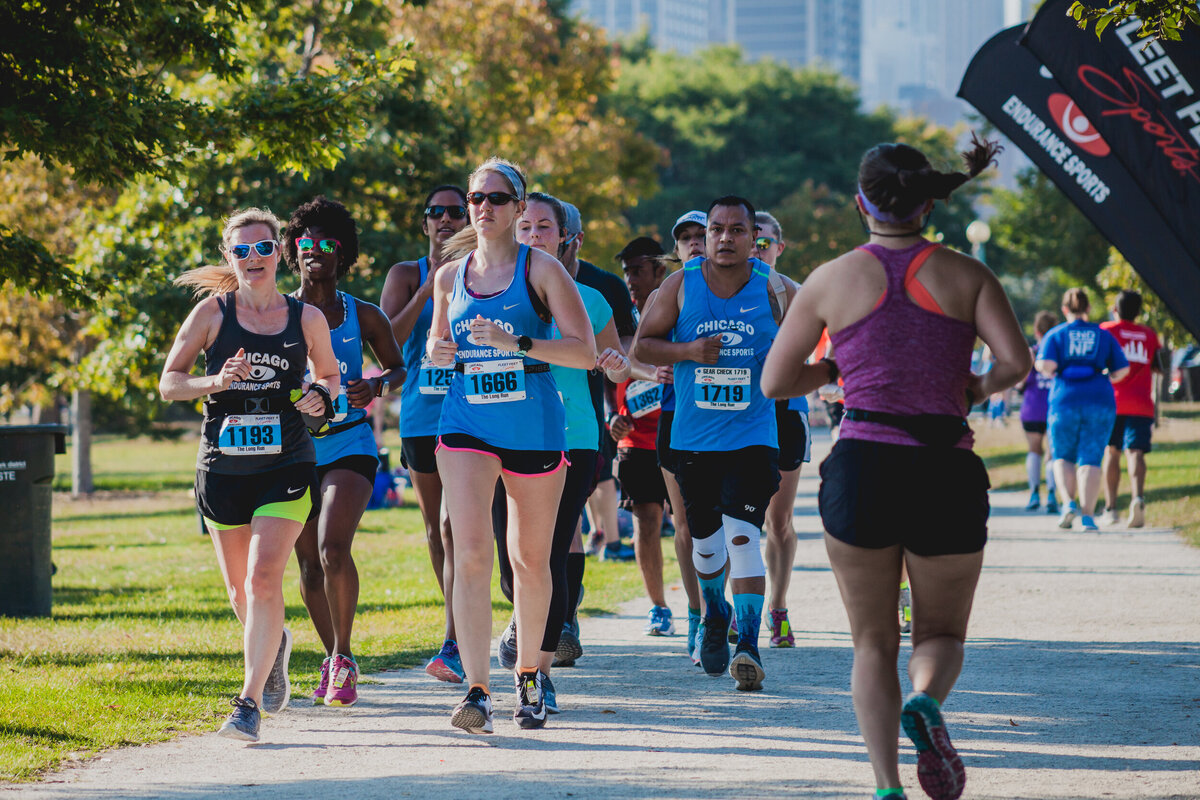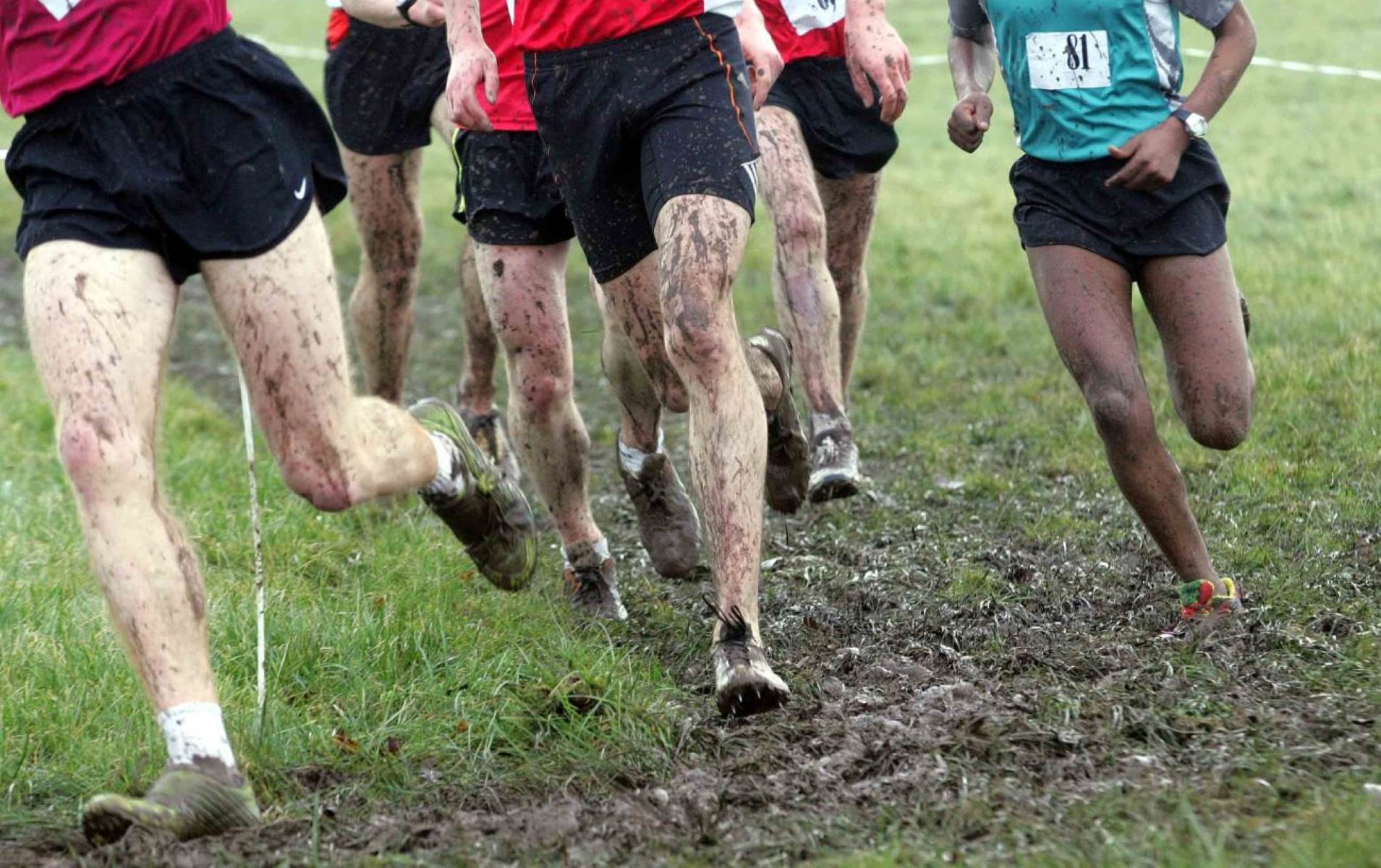Home>Misc>Featured>What Is A Good Long Distance Running Pace


Featured
What Is A Good Long Distance Running Pace
Modified: March 2, 2024
Discover what is considered a good long distance running pace and get featured tips to improve your performance.
Introduction
Long distance running is a challenging and rewarding sport that pushes the limits of human endurance. Whether you are a seasoned runner or a beginner looking to tackle your first marathon, understanding your pace is essential for achieving your goals and maximizing your performance.
Your running pace, or the speed at which you cover a certain distance, is influenced by various factors such as fitness level, training regimen, terrain, and overall health. Balancing these factors and finding your optimal running pace can be a key determinant in achieving your desired performance level and avoiding burnout or injury.
In this article, we will explore the factors that affect long distance running pace, the importance of understanding your current fitness level, and how to determine your goal pace. We will also provide valuable tips for improving your long distance running pace, the role of consistency in training, and how to incorporate interval training into your regimen. Additionally, we will discuss the significance of monitoring and adjusting your pace, as well as the importance of nutrition, hydration, and injury prevention.
By the end of this article, you will have a comprehensive understanding of what makes a good long distance running pace and the tools necessary to improve your performance.
Factors Affecting Long Distance Running Pace
Your long distance running pace is influenced by a variety of factors, both internal and external. Understanding these factors can help you identify areas for improvement and optimize your performance on the road or trail.
1. Fitness Level: Perhaps the most obvious factor affecting running pace is your current fitness level. The more you train and improve your cardiovascular endurance and muscular strength, the faster your pace will become. Regular exercise, including running and cross-training, can help you build the necessary fitness foundation for faster long distance running.
2. Terrain: The type of terrain you run on can significantly impact your pace. Running on flat, even surfaces like paved roads allows for a faster and more consistent pace compared to running on hilly or uneven trails. It is important to factor in the elevation and difficulty of the terrain when assessing your running pace.
3. Weather Conditions: Weather conditions such as temperature, humidity, and wind can also affect your pace. Running in hot and humid conditions can increase your heart rate and make it more difficult to maintain a fast pace. On the other hand, running in cooler temperatures with a tailwind can help improve your speed. Be mindful of weather conditions and adjust your pace accordingly.
4. Age and Genetics: While age is a factor that we cannot control, it does affect our running pace. As we get older, our bodies naturally experience a decline in muscle mass, aerobic capacity, and overall physical performance. Additionally, genetics play a role in determining our athletic abilities, including running pace. It’s essential to be realistic about our individual capabilities and work with what we have.
5. Rest and Recovery: Adequate rest and recovery are crucial for maintaining a consistent and efficient running pace. Overtraining and not allowing your body enough time to recover can lead to fatigue, muscle soreness, and decreased performance. Listen to your body, prioritize rest days, and incorporate proper recovery techniques to optimize your pace.
Remember, everyone is unique, and these factors may affect individuals differently. It’s essential to understand your own body and take steps to improve and optimize your running pace based on your unique circumstances.
Understanding Your Current Fitness Level
Before you can determine your goal pace and work towards improving your long distance running, it is crucial to have an accurate understanding of your current fitness level. This self-assessment will serve as a baseline from which you can set realistic goals and monitor your progress.
One way to assess your fitness level is by evaluating your recent running performances. Take note of your average pace and the distances you can comfortably cover. If you consistently find yourself struggling to maintain a certain pace or distance, it may indicate an area that needs improvement. Alternatively, if you are consistently exceeding your expectations, it may be a sign that you are capable of pushing yourself further.
Another method of understanding your fitness level is by evaluating your recovery time. After a challenging run, take note of how long it takes for your heart rate and breathing to return to normal. The faster your recovery time, the fitter you are likely to be. Additionally, assessing your body composition, such as body fat percentage and muscle mass, can provide insight into your overall physical fitness.
Consider incorporating a fitness test into your routine to gain a more accurate understanding of your current fitness level. Common tests include the Cooper Test, where you run for 12 minutes and measure the distance covered, or the Rockport Walk Test, which assesses your cardiovascular fitness by measuring your heart rate while walking a mile.
Don’t forget to listen to your body during your training sessions. Assess whether you are able to maintain good form, breathe comfortably, and sustain consistent effort. If you consistently feel exhausted or unable to complete your runs, it may indicate that you need to focus on building your fitness level gradually.
By understanding your current fitness level, you can set realistic goals, create an appropriate training plan, and identify areas for improvement. Remember that improving your fitness level takes time and consistent effort. Patience and perseverance are key as you work towards reaching your desired pace and performance level.
Determining Your Goal Pace
Setting a clear and realistic goal pace is an essential step in improving your long distance running performance. It provides a target to strive for and helps structure your training plan. While determining your goal pace, it’s crucial to consider both your current fitness level and the specific race or distance you are training for.
1. Assess Your Current Pace: Look back at your recent race times or personal bests to gain a sense of your current pace. Consider the distance and terrain of these races to ensure they align with your upcoming goals. This will serve as a starting point for determining your goal pace.
2. Research Race Requirements: If you are training for a specific race, research the requirements and expectations for that race. Some races may have time cutoffs or provide guidelines for different pace groups. Understanding these factors will help you determine a realistic goal pace.
3. Consider the Training Period: Take into account the length of time available for training. If you have a shorter training period, it may be more realistic to set a slightly conservative goal pace to allow for gradual improvements. Conversely, if you have several months to train, you may be able to set a more ambitious goal.
4. Be Realistic and Incremental: Consider your fitness level and the time you can dedicate to training. It’s important to set a goal pace that pushes you, but is also achievable. Setting goals that are too ambitious may lead to burnout or injury. It’s better to start with a slightly conservative goal and adjust as you progress.
5. Break It Down: One effective method for determining your goal pace is to break down your desired finish time into smaller, manageable splits. For example, if you’re aiming to complete a marathon in four hours, you can set a goal pace of nine minutes per mile. Breaking it down this way makes the goal more tangible and helps you strategize throughout the race.
Remember, goal paces can change as you progress in your training. Continuously reassess your fitness level and adjust your goals accordingly. It’s better to set attainable targets and surpass them than to constantly fall short of overly ambitious goals.
By determining a clear and realistic goal pace, you can tailor your training plan to focus on the specific pace requirements of your upcoming race or distance. This targeted approach will allow you to make consistent progress towards your desired outcome.
Tips for Improving Long Distance Running Pace
Improving your long distance running pace requires dedication, perseverance, and a strategic approach to training. Here are some helpful tips to help you progress towards your goal and become a faster runner:
1. Consistency is Key: Consistency in your training routine is essential for improving your running pace. Make running a regular part of your schedule and aim for a balanced mix of easy runs, long runs, and speed workouts. Gradually increase your mileage and intensity over time, allowing your body to adapt and become stronger.
2. Incorporate Interval Training: Interval training involves alternating between periods of high-intensity running and recovery. This type of training helps increase your endurance, speed, and overall aerobic capacity. Include intervals such as fartleks, tempo runs, and hill sprints in your training program to challenge your body and improve your pace.
3. Monitor and Adjust Your Pace: Pay attention to your current running pace and be mindful of pushing yourself outside of your comfort zone. As you progress in your training, aim to gradually increase your speed and shorten your average mile time. Utilize a GPS watch or running app to track your pace and adjust accordingly throughout your runs.
4. Strength and Cross-Training: Incorporating strength training exercises into your routine can enhance your running performance. Focus on exercises that target your lower body, such as squats, lunges, and calf raises, to build power and endurance. Additionally, engage in cross-training activities like swimming, cycling, or yoga to improve overall fitness and prevent overuse injuries.
5. Proper Nutrition and Hydration: Fueling your body with the right nutrients is crucial for optimal performance. Eat a balanced diet rich in lean proteins, whole grains, fruits, and vegetables to support your training. Stay hydrated by drinking enough water throughout the day and consider fueling during longer runs with energy gels or sports drinks.
6. Recovery and Rest: Allow your body ample time to recover and rest between training sessions. Adequate rest is essential for muscle repair and growth, which ultimately contributes to improved running pace. Incorporate rest days into your training schedule, practice active recovery techniques such as foam rolling or stretching, and prioritize sleep for optimal recovery.
7. Seek Professional Guidance: If you’re looking to make significant improvements in your running pace, consider working with a running coach or personal trainer. They can provide personalized training plans, offer valuable insights, and help you fine-tune your technique to maximize your speed and efficiency.
Remember, improving your running pace takes time and patience. Focus on gradual progress and celebrate small victories along the way. By implementing these tips into your training regimen, you will be on your way to becoming a faster and more efficient long distance runner.
The Importance of Consistency in Training
Consistency is often regarded as one of the most crucial elements in improving long distance running pace. It plays a vital role in building endurance, developing speed, and overall performance enhancement. Here are some key reasons why consistency in training is essential:
1. Adaptation and Progression: Consistent training allows your body to adapt and progressively improve over time. When you expose your body to regular running and training stimuli, it learns to become more efficient, strengthening muscles, improving cardiovascular fitness, and enhancing overall endurance. Consistency sets the foundation for continuous progress.
2. Conditioning the Mind and Body: Consistency not only conditions the body but also trains the mind. It helps develop mental fortitude, discipline, and focus. By sticking to a regular training routine, you build mental resilience, enabling you to push through tough workouts or races when fatigue sets in. Consistency builds a strong mind-body connection, allowing you to perform at your best even in challenging conditions.
3. Avoiding Plateaus: Inconsistent training or frequent breaks can lead to plateaus in performance. When you are inconsistent with your training, it becomes challenging to make progress and improve your running pace. On the other hand, consistent training provides a steady stimulus for improvement, minimizing the risk of hitting a plateau and allowing for continual growth in performance.
4. Injury Prevention: Consistency plays a crucial role in injury prevention. Irregular training, sudden increases in mileage or intensity, and inadequate rest can increase the risk of overuse injuries. By maintaining a consistent training routine and gradually progressing, you give your body time to adapt and become stronger, reducing the chances of injury and allowing for safe and sustainable improvements in pace.
5. Establishing Routines and Habits: Consistency in training helps establish routines and habits. By making running a regular part of your schedule, it becomes a natural and ingrained habit. Your body and mind become accustomed to the demands of running, making it easier to stick to your training plan and maintain consistency in the long term.
6. Building Confidence: Consistent training builds confidence in your abilities as a runner. Seeing progress and improvement in your running pace over time boosts self-belief and motivates you to keep pushing yourself. Each completed training session serves as a reminder of your dedication and commitment, enhancing your confidence and mental strength on race day.
Remember that consistency does not mean pushing yourself to the brink every day. It means finding a balance between effort and recovery, listening to your body, and being committed to your training plan. Consistency in training is the key to unlocking your full potential and achieving your long distance running pace goals.
Incorporating Interval Training
Interval training is a powerful tool for improving long distance running pace. It involves alternating between periods of high-intensity running and recovery, pushing your body beyond its usual limits. Here are some key benefits of incorporating interval training into your training regimen:
1. Increased Speed and Endurance: Interval training helps improve both speed and endurance. The high-intensity intervals challenge your body to work harder and adapt to the increased demands, thereby increasing your overall running pace. By pushing your limits in short bursts, you train your body to sustain a faster pace for longer periods of time.
2. Cardiovascular Conditioning: Interval training is known to enhance cardiovascular fitness. By working at high intensities during the intervals, you stimulate your heart to pump blood more efficiently, improving oxygen delivery to the muscles. Over time, this leads to increased cardiovascular endurance, allowing you to sustain a faster pace for longer distances.
3. Efficient Use of Time: Interval training is time-efficient. Since you are working at higher intensities, you can achieve significant fitness gains in a shorter amount of time compared to traditional steady-state running. This makes interval training a great option for runners with limited time availability.
4. Fat-Burning and Calorie Expenditure: Interval training is an effective way to burn calories and increase fat metabolism. The high-intensity intervals elevate your heart rate and increase energy expenditure during the workout. Additionally, the “afterburn effect” means that your body continues to burn calories at an elevated rate even after the workout is complete.
5. Mental Toughness and Focus: Interval training challenges your mental resilience and helps improve focus and discipline. Pushing through the intense intervals requires mental strength and determination. By consistently incorporating interval training into your routine, you develop mental toughness, which can be beneficial not only in running but also in other areas of life.
To incorporate interval training into your routine:
- Start with a warm-up: Begin with a 5-10 minute light jog or dynamic stretching to prepare your body for the workout.
- Choose your intervals: Determine the length and intensity of your intervals based on your fitness level and goals. For example, you can do 30-second sprints followed by 90 seconds of recovery, or 1-minute fast pace followed by 2 minutes of recovery.
- Gradually increase intensity: As your fitness improves, progressively increase the intensity or duration of the intervals to continue challenging your body.
- Maintain proper form: Focus on running with proper form during the high-intensity intervals to avoid injury. Engage your core, keep your posture upright, and maintain a quick turnover.
- Include recovery periods: Allow for active recovery periods between intervals to catch your breath and prepare for the next burst of intensity.
- Cool down: Finish your interval workout with a 5-10 minute slow jog or walk to gradually bring your heart rate back to normal and prevent muscle soreness.
Incorporating interval training into your training regimen will help you develop the speed, endurance, and mental resilience necessary to improve your long distance running pace.
Monitoring and Adjusting Your Pace
Monitoring and adjusting your pace during training and races is crucial for improving long distance running performance. To optimize your pace, you need to develop the ability to assess your effort level and make necessary adjustments. Here are some key considerations to help you effectively monitor and adjust your pace:
1. Listen to Your Body: Pay attention to how your body feels during your runs. Monitor your breathing, heart rate, and perceived effort level. Your body sends signals that can indicate whether you’re pushing too hard or not pushing hard enough. Learn to recognize these cues and make adjustments accordingly.
2. Use a GPS Watch or Running App: Utilize modern technology to track your pace during training sessions. GPS watches and running apps provide real-time data on your pace, distance, and time. This allows you to monitor your progress and make immediate adjustments as needed.
3. Start Slow: When beginning a long distance run or race, start at a pace that feels comfortable and sustainable. It’s always better to start conservatively and gradually increase your pace if you feel strong and confident later on. Starting too fast can lead to early fatigue and a significant drop in pace later in the run.
4. Implement Negative Splits: Aim to run negative splits, where you achieve a faster pace in the second half of your run or race. This strategy allows you to conserve energy early on and gradually build speed, resulting in better overall performance. It requires discipline and self-control, but with practice, you can master this pacing technique.
5. Practice Pacing Strategies: Incorporate specific pacing strategies into your training runs. This might include running at a consistent pace for a specific distance or implementing interval training to simulate race conditions. By honing your ability to maintain a steady and controlled pace, you’ll train your body to become more efficient at your desired speed.
6. Adjust for Terrain and Weather: Be mindful of how terrain and weather conditions can impact your pace. Running uphill or on rough trails may naturally slow you down, and strong headwinds can increase your effort level. Adjust your pace expectations accordingly, recognizing that maintaining a consistent effort level is more important than maintaining a consistent pace.
7. Evaluate and Learn from Races: Participating in races provides valuable opportunities to gauge your progress and adjust your pace. After each race, reflect on your performance. Analyze whether you set a realistic pace, estimate if you could have pushed slightly harder, or determine if you started too aggressively. Use these insights to inform your future training and pacing strategies.
Remember, pacing is a skill that develops with practice and experience. Your ability to monitor and adjust your pace will improve over time as you become more attuned to your body’s signals and learn to strategize effectively. Regular assessment and experimentation will help you find the optimal pace for improved long distance running performance.
Nutrition and Hydration for Optimal Performance
Proper nutrition and hydration are crucial for optimizing long distance running performance. Fueling your body with the right nutrients and maintaining proper hydration levels can enhance your energy, endurance, and overall running pace. Here are some key considerations for nutrition and hydration:
1. Balanced Diet: Maintain a balanced diet that consists of carbohydrates, proteins, and fats. Carbohydrates serve as the primary fuel source for endurance activities, supplying energy to sustain your pace. Proteins are essential for muscle repair and recovery, while fats provide long-lasting energy. Consume a variety of fruits, vegetables, whole grains, lean proteins, and healthy fats to meet your nutritional needs.
2. Pre-Run Meal: Eat a well-balanced meal 2-3 hours before your long distance run to provide a steady source of energy. Opt for easily digestible carbohydrates such as whole wheat toast, oatmeal, or a banana. Avoid foods high in fiber, fat, or protein, as they may cause stomach discomfort during the run.
3. Fuel During the Run: For longer runs, it’s essential to replenish your energy stores. Consuming carbohydrates in the form of energy gels, sports drinks, or easily digestible snacks can help maintain your pace and prevent fatigue. Experiment in training runs to find out what works best for you and develop a fueling strategy for race day.
4. Hydration: Proper hydration is crucial for optimal performance. Drink water throughout the day to stay hydrated, and consume additional fluids during your runs, especially in hot or humid conditions. Electrolyte-rich sports drinks can help replace the sodium and other minerals lost through sweat. Monitor your urine color to assess your hydration status; pale yellow urine indicates adequate hydration.
5. Post-Run Recovery: Refuel your body after a long distance run to support recovery and muscle repair. Consume a balanced meal or snack within 30-60 minutes after your run, combining carbohydrates for replenishing glycogen stores and proteins for muscle repair. Chocolate milk, yogurt with fruits, or a protein smoothie are excellent options.
6. Individualized Nutrition Plan: Every runner is unique, and it’s essential to develop an individualized nutrition plan that suits your specific needs. Consider working with a sports nutritionist or dietitian who can assess your requirements, provide personalized recommendations, and help you create a sustainable eating plan to support your running goals.
7. Practice in Training Runs: Use your training runs as an opportunity to practice your fueling and hydration strategies. Experiment with different foods, drinks, and timings to determine what works best for you. This will help minimize the risk of digestive issues or energy crashes during races.
Remember that nutrition and hydration are not only important during your training runs but also in the days leading up to a race. Prioritize healthy eating habits and hydration throughout your training program to ensure your body is adequately fueled and ready to perform at its best.
Avoiding Overtraining and Injury
Overtraining and injury can derail your progress and hinder your long distance running pace improvements. It’s crucial to strike a balance between pushing your limits and allowing your body to properly recover. Here are some key strategies to avoid overtraining and injury:
1. Gradual Progression: Avoid sudden increases in mileage or intensity. Gradually increase your training volume and intensity to allow your body to adapt and build endurance. A general rule of thumb is to increase mileage by no more than 10% per week.
2. Rest and Recovery: Incorporate rest and recovery days into your training schedule. Rest days allow your body to repair and rebuild muscles, reducing the risk of overuse injuries. Listen to your body and take additional rest days or lower-intensity recovery runs as needed.
3. Cross-Training: Incorporate cross-training activities such as swimming, cycling, or strength training into your routine. This helps to balance the impact on your joints and muscles, reducing the risk of overuse injuries. Cross-training also improves overall fitness and enhances your performance as a runner.
4. Quality Sleep: Sleep is essential for recovery and overall health. Aim for 7-9 hours of quality sleep each night to allow your body to repair, rejuvenate, and prepare for your training. Lack of sleep can increase the risk of injury and hinder your progress.
5. Listen to Your Body: Pay attention to any signs of fatigue, pain, or discomfort. Pushing through when you’re not feeling well can lead to overtraining and increase the risk of injury. Be willing to adjust your training plan when necessary and seek medical advice if you experience persistent pain or injury symptoms.
6. Strength and Mobility Training: Incorporate strength training exercises targeted at the muscles used in running, such as the core, hips, and legs. Strengthening these areas can help prevent imbalances and enhance stability, reducing the risk of common running injuries. Additionally, incorporating mobility exercises can improve flexibility and reduce the risk of muscle tightness or strains.
7. Proper Running Form: Maintaining proper running form is important for minimizing the strain on your body and reducing the risk of injury. Focus on running with a tall posture, relaxed upper body, and light, quick strides. Avoid overstriding and aim for a midfoot strike.
Remember that prevention is key when it comes to overtraining and injury. Take proactive steps to listen to your body, prioritize rest and recovery, and address any imbalances or weaknesses. By taking care of your body and avoiding overtraining and injury, you’ll be able to consistently train and make progress in improving your long distance running pace.
Conclusion
Improving your long distance running pace requires commitment, determination, and a strategic approach to training. By considering the factors that affect your pace, understanding your current fitness level, and setting realistic goals, you can determine the direction of your training. Incorporating interval training, monitoring and adjusting your pace, and paying attention to nutrition and hydration will optimize your performance.
Consistency in training is crucial for progress, as it allows your body to adapt and improve over time. By finding a balance between effort and recovery, you can avoid plateaus and reduce the risk of injury. Paying attention to your body’s cues, monitoring your pace, and adjusting as needed will help you find the optimal pace for your long distance runs.
Additionally, proper nutrition and hydration fuel your body and support optimal performance. By consuming a balanced diet, practicing pre- and post-run fueling, and staying hydrated, you can enhance your energy, endurance, and overall running pace.
Avoiding overtraining and injury is essential for maintaining consistency in your training. Gradual progression, rest and recovery, cross-training, and listening to your body will help you avoid burnout and stay on track. Focusing on proper form, incorporating strength and mobility training, and prioritizing sleep will further minimize the risk of injury and promote longevity in your running journey.
In conclusion, improving your long distance running pace is a multifaceted process that involves a combination of factors. By implementing the strategies outlined in this article and maintaining a positive mindset, you can consistently progress and achieve your goals. Embrace the journey, stay dedicated, and enjoy the rewards of becoming a faster and more efficient long distance runner.









